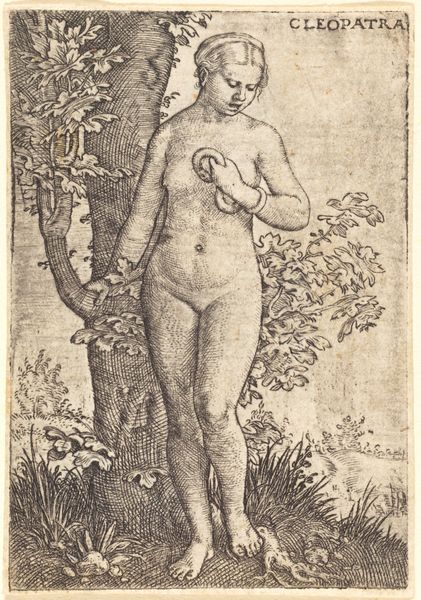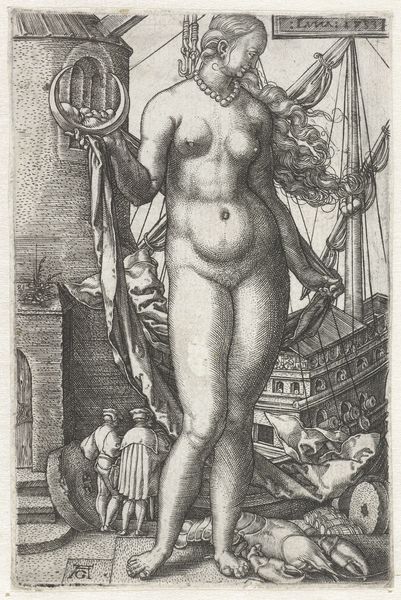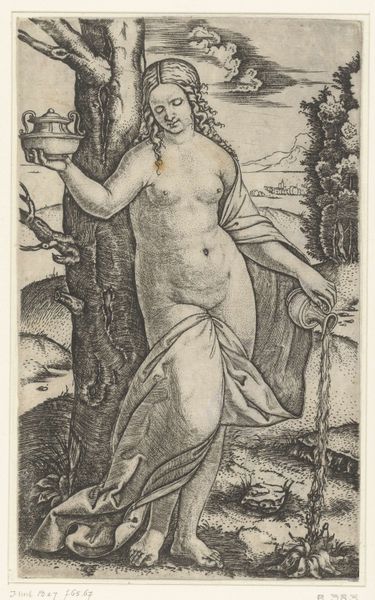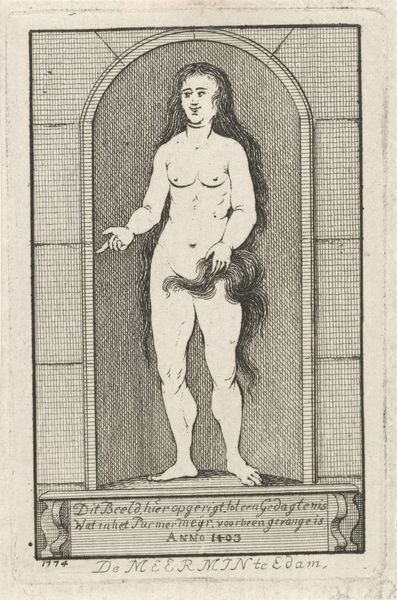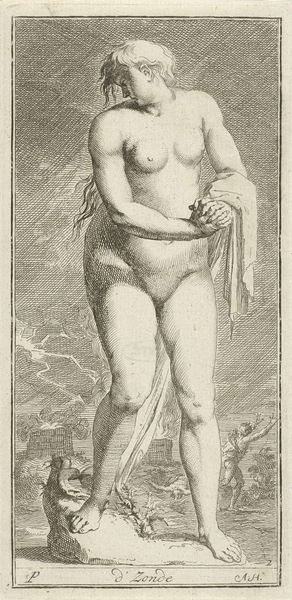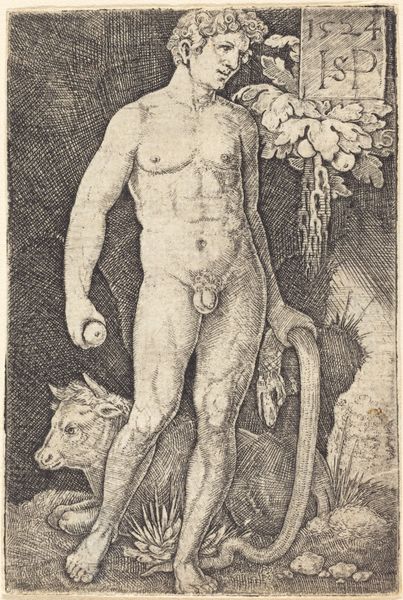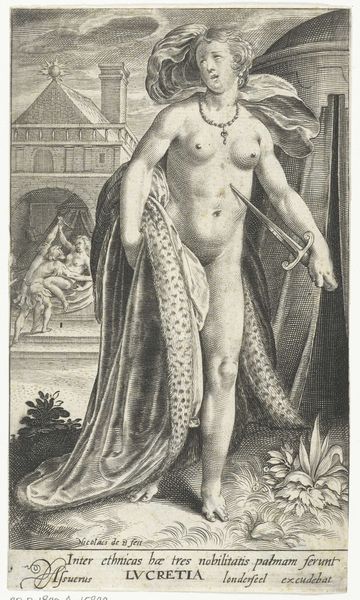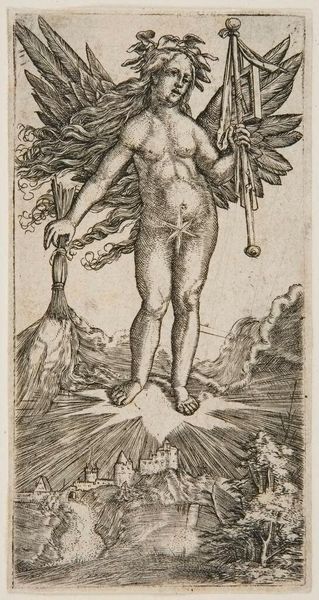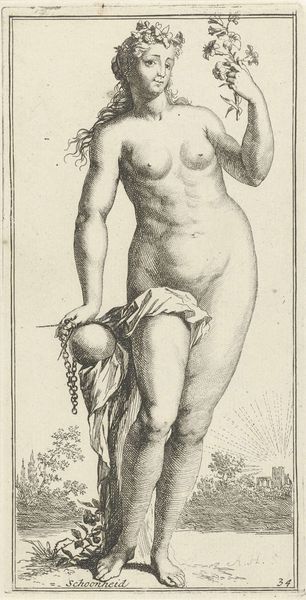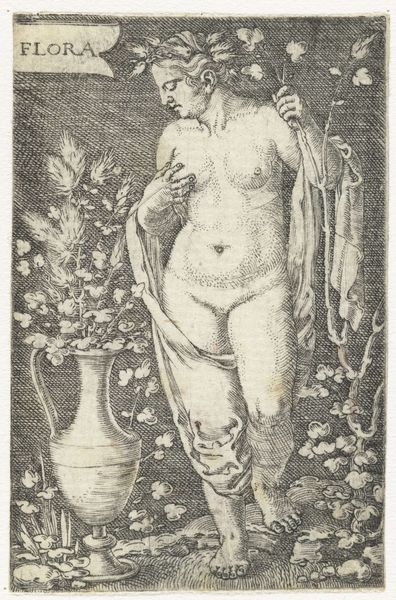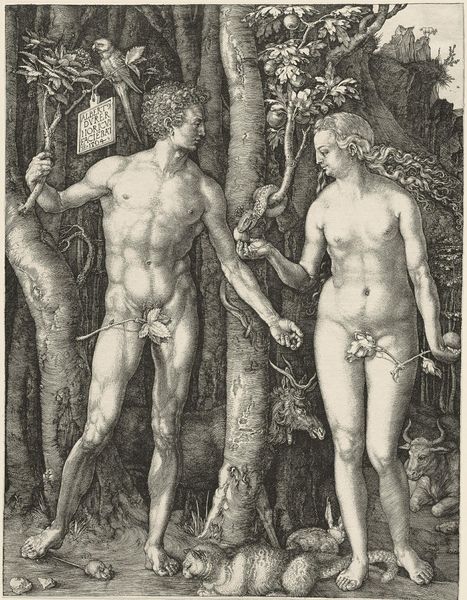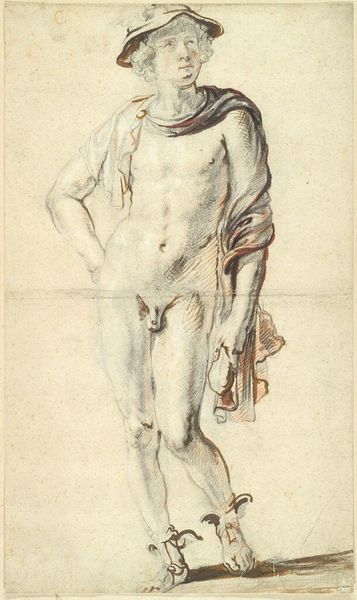
Vanity, central panel from the Triptych of Earthly Vanity and Divine Salvation 1485
0:00
0:00
hansmemling
Musée des Beaux-Arts de Strasbourg, Strasbourg, France
oil-paint
#
portrait
#
oil-paint
#
landscape
#
oil painting
#
vanitas
#
italian-renaissance
#
nude
Dimensions: 20.2 x 13.1 cm
Copyright: Public domain
Hans Memling painted this oil on panel artwork, Vanity, as the central panel for the Triptych of Earthly Vanity and Divine Salvation. It offers a stark warning against excessive concern with one's appearance. Painted in the late fifteenth century, in what is now Belgium, this image engages with the religious and cultural norms of the time. The figure is nude, a visual reference to the story of Adam and Eve. This imagery would have been particularly resonant for those who attended church or religious services, reminding them of the consequences of sin and the importance of spiritual salvation. The mirror in the woman's hand symbolizes self-obsession, while the surrounding landscape offers a glimpse of worldly pleasures that distract from divine purpose. Historical sources, such as sermons, theological treatises, and even personal diaries, can provide additional insight into the cultural significance of images like this. They reveal how art served as a powerful tool for moral instruction, reinforcing social norms and religious beliefs.
Comments
No comments
Be the first to comment and join the conversation on the ultimate creative platform.
